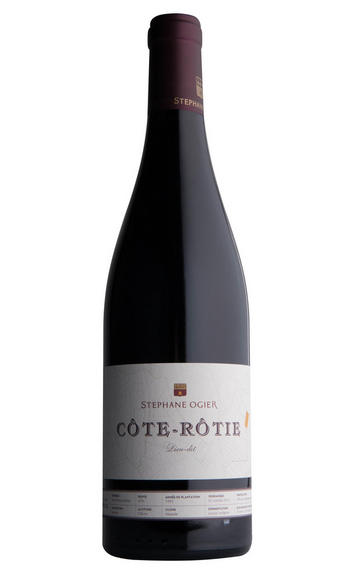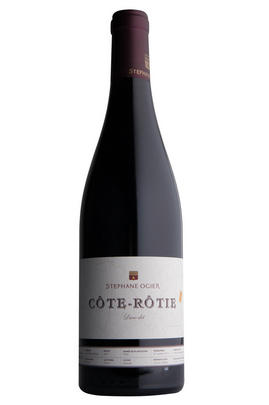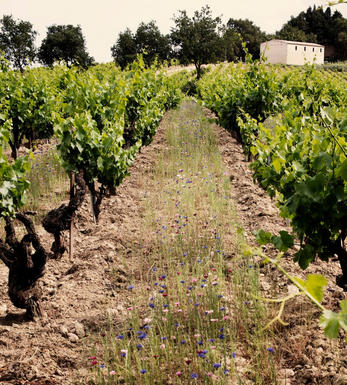
2010 Côte-Rôtie, Stéphane Ogier, Rhône

Critics reviews
Robert M. Parker, Jr. - 27/12/2012
(Jancis Robinson MW - jancisrobinson.com - 1 Mar 2012)
(Robert Parker - Wine Advocate - Dec 2012)
About this WINE

Domaine Stephane Ogier
The Ogier family had been established growers in Ampuis for over seven generations, but it was only in the 1980s that they began vinifying their own grapes. Stéphane joined the family estate in ’97, working alongside his father Michel, before taking over in 2003.
Heralded as the face of the Northern Rhône’s new generation, Stéphane continues acquiring new parcels and trying new techniques. He brings a Burgundian approach to the region’s terroir from his studies in Beaune. He works with multiple lieux-dits, vinifying each separately and using oak sparingly. This allows the characteristics of each to show. He releases many wines as single lieu-dit bottlings later in the year and others he blends, selecting from different barrels to build a style representative of both his vision and the vintage. Stéphane’s latest investment includes vineyards in Rasteau, Cairanne, and Plan de Dieu in the Southern Rhône, bringing his total land-ownings there up to 50 hectares, all destined for his Côtes-du-Rhône offering.

Côte-Rôtie
Côte-Rôtie is one of the most famous of the northern Rhône appellations, with some single vineyard cuvées now selling for the same prices as First Growth Bordeaux. It is the northernmost outpost of the Syrah grape.
Côte-Rôtie translates as ‘roasted hillside’, as the south-facing slopes are exposed to the maximum-possible sunlight. Vines have been planted here since Roman times, although the appellation was only created in 1940. Today it covers 500 hectares, with 276 hectares of vineyards stretched across eight kilometres.
Phylloxera devastated vineyards in the late 1800s and Côte-Rôtie’s fortunes remained in the doldrums for another century. After the War, a farmer would receive double the price for a kilo of apricots as for a kilo of grapes, hence vineyards were grubbed up and wine production became increasingly smaller.
It has only really been recognised as a top-quality wine-producing area since the 1970s, with Guigal being the main impetus behind its revival. The two best slopes, Côte Brune and Côte Blonde, rise steeply behind Ampuis and overlook the river. The Côte Brune wines are much firmer and more masculine (the soils are clay and ironstone), whereas the Côte Blonde makes wines with more finesse and elegance due to its light, sandy-limestone soil. Both the Côte Brune and Côte Blonde vineyards rise to 1,000 feet, with a gradient of 30 to 50 degrees.
The wines are made from the Syrah grape, however up to 20 percent of Viogner can be used in the blend, adding finesse, elegance and floral characteristics to the wine. Viognier ripens more quickly than Syrah and the appellation rules stipulate that the grapes must be added to the fermentation – rather than blended later. The best Côte-Rôtie are very deep in colour, tannic and spicy, and need 10 years to evolve and develop.
There are nearly 60 official vineyards (lieux-dits); the best-known are: La Mouline, La Chatillonne (Vidal-Fleury, owned by Guigal) and La Garde (Rostaing) in Côte Blonde; La Viallière, (Rostaing), La Landonne (Guigal, Rostaing) and La Turque (Guigal) in Côte Brune.
Styles vary from heavily-extracted tannic wines which need many years to soften through to lighter, supple and less-structured wines which do not require extended bottle ageing. The most famous wines of Côte-Rôtie are Guigal’s three single-vineyard cuvées: La Mouline, La Turque and La Landonne. These are aged in new wood for 48 months, and demand for them amongst connoisseurs and collectors is significant, leading to prices sometimes comparable to Bordeaux First Growths.
Recommended producers: Guigal, Gerrin, Rostaing, Ogier, Burgaud
Best vintages: 2006, 2005, 2004, 2001, 1999, 1991, 1990, 1985

Syrah/Shiraz
A noble black grape variety grown particularly in the Northern Rhône where it produces the great red wines of Hermitage, Cote Rôtie and Cornas, and in Australia where it produces wines of startling depth and intensity. Reasonably low yields are a crucial factor for quality as is picking at optimum ripeness. Its heartland, Hermitage and Côte Rôtie, consists of 270 hectares of steeply terraced vineyards producing wines that brim with pepper, spices, tar and black treacle when young. After 5-10 years they become smooth and velvety with pronounced fruit characteristics of damsons, raspberries, blackcurrants and loganberries.
It is now grown extensively in the Southern Rhône where it is blended with Grenache and Mourvèdre to produce the great red wines of Châteauneuf du Pape and Gigondas amongst others. Its spiritual home in Australia is the Barossa Valley, where there are plantings dating as far back as 1860. Australian Shiraz tends to be sweeter than its Northern Rhône counterpart and the best examples are redolent of new leather, dark chocolate, liquorice, and prunes and display a blackcurrant lusciousness.
South African producers such as Eben Sadie are now producing world- class Shiraz wines that represent astonishing value for money.


Buying options
Add to wishlist
Description
As always the Côte Rôtie is an asemblage of grapes sources from both Cotes, with the lieus-dits of Tupins, Semons But de Mont, Boudin and Les Roziers all featuring to some degree. The wine is more elegant than the 2009, which Stéphane describes as ‘un millésime solaire’. He adds that 2009 is the vintage for the ‘grand publique’ whereas 2010 will be for the connoisseur, for the purist. For the English market, he adds, helpfully. It certainly appeals to this palate with its combination of ripe fruit, balancing acidity and beautifully silky tannins.
Simon Field MW, BBR Buyer, February 2012
Young, dynamic and handsome, Stéphane Ogier has had another good year, purchasing some more prime vineyards, making some fantastic 2010s and celebrating the birth of his first son, Marius. His wine-making philosophy is intriguing, minutely sensitive to the requirements of both the vintage and the parcel in question. As a generalisation he prefers new wood and destemming for the Côte Blonde, and older wood and less destemming in the Côte Brune. But there are always exceptions... and the wines are always exceptional...
wine at a glance
Delivery and quality guarantee